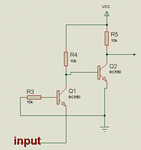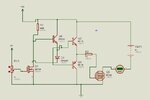lighty
Member level 3

I omitted the rest of the circuit in order not to confuse things. The diode is in fact a part of boost converter and is not a series protection diode.
As for the battery connected in reverse, the boost converter will charge capacitor and it would get discharged into reversely polarized battery no matter what (provided the charged capacitor voltage being higher than battery voltage, which is almost always the case in this particular approach to charging). It would probably lead to excessive outgassing and potential explosion. Hence the reverse polarity testing.
Could you expand more on your transistor on battery idea? I'm not sure I understand it correctly.
As for the battery connected in reverse, the boost converter will charge capacitor and it would get discharged into reversely polarized battery no matter what (provided the charged capacitor voltage being higher than battery voltage, which is almost always the case in this particular approach to charging). It would probably lead to excessive outgassing and potential explosion. Hence the reverse polarity testing.
Could you expand more on your transistor on battery idea? I'm not sure I understand it correctly.




